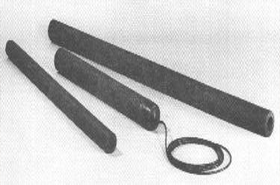
How You Can Explore the Root of Electrolysis
The phenomenon of electricity is common, though not always so. In ancient Greece atmospheric electrical phenomena, such as lightning and lightning, were attributed to Zeus. It was with the advent of the production of batteries, such as the Alessandro Volta battery, that the domestication of this titan of nature became possible, giving rise to a new branch of chemistry: electrochemistry. You need to know about the Electrolyte substances here.
It is in this new area that the term denominated electrolysis is inserted, a name given to the process that uses electric energy to realize a transformation that, by it, would not be processed alone.
It is noteworthy that in many cases, the transformation that the substances undergo is not spontaneous, requiring significant amounts of electrical energy. This is the case of the transformation of bauxite ore (Al 2 O 3 • x H 2 O) into aluminum, which occurs at high temperatures and with high consumption of electricity. There are currently two types of electrolytic process: igneous electrolysis and aqueous solution electrolysis.
Igneous electrolysis

It is called igneous electrolysis the electrolytic process that requires the melting of the material to undergo a transformation. This casting is necessary, as this will cause the mobility of the ions to be separated, allowing the current to flow through the reaction medium. The example of aluminum in the previous paragraph occurs only in electrolytic vats suitable for igneous electrolysis. Metals of families I and II of the periodic table such as sodium and magnesium are also produced by igneous electrolysis of their corresponding salts or oxides.
Electrolysis in aqueous solution
Already in electrolysis in aqueous solution the process occurs with the free circulation of ions in an aqueous medium, these ions in the overwhelming majority of chaos, coming to form ionic salts. Unlike igneous electrolysis, aqueous solution electrolysis does not require high temperatures or extremely refined isolation compartments between its products, as separate materials generally do not interact aggressively. Electrolysis of brine aqueous sodium chloride solution is an example of this and produces sodium hydroxide and chlorine gas, two extremely important industrial inputs.
There is, however, a limitation in aqueous electrolysis: the priority of ion discharge in solution. Since ions are dissolved in water and water itself ionizes, there will be times when ions will compete for the possibility of being oxidized or reduced. That is, the cations and anions to the left of the water will not be formed in aqueous electrolysis, as shown in the figure below.
Cation and anion discharge priority
Discharge priority guides an entire industry sector, represented by electroplating of metal objects. Through the use of the precepts of aqueous solution electrolysis, an important branch of the industry fights against metal corrosion.
Electroplating, used to protect metals from corrosion, employs a metal electrolytically constructed layer on the metal to be protected. These metals generally react with the weather rain, sun, air oxygen, etc. and this reactivity demands protection. It is through electroplating that we obtain chrome, nickel or gold plated objects that meet not only the demand for metal protection but also aesthetic appeals dictated by society and it is through this process that electrolytically pure copper is obtained.
